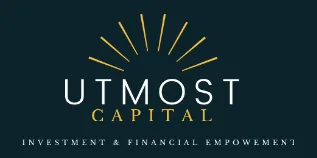This is your chance to passively own a 64-unit apartment community

Earn strong returns & enjoy powerful tax benefits
While solving the affordable housing crisis
The Devonshire apartment community has been loved and cared for by a single owner for over 30 years, but it's in need of repairs and renovations.
This area is in need of more high-quality, affordable housing. Help us provide just that to residents of Baltimore County.
Highly desirable location for workforce housing
Conveniently located near I-695 and I-795; numerous shopping centers located within a 2 mile radius
Major area employers nearby: Northwest Hospital, CareFirst, T. Rowe Price
Major area colleges nearby: Stevenson University, Towson University, Loyola University

Watch the property overview video below for all the details
Projected Returns
1.7 X average annual return
17.65% average annual return
6% preferred returns for all passive investors
75% of cashflow will go to passive investors, 25% will go to the operations team
Unique Benefits
Extremely experienced operations team with very strong track record
Eligible for Self-Directed IRA investments
Eligible for depreciation tax benefits
Helpful Resources

The 8 KPIs Every Multifamily Real Estate Investor Should Know
When you invest in real estate passively, especially through syndications, you’re trusting a sponsor to manage the asset effectively and deliver strong returns. But how do you actually know if a property is performing well?
The answer lies in Key Performance Indicators (KPIs) quantifiable metrics that help investors measure the financial health and operational performance of a multifamily asset.
Whether you’re an experienced investor or just beginning to explore syndications, understanding these KPIs can help you evaluate opportunities, ask the right questions, and track progress after you invest.
Here are 8 essential KPIs every multifamily investor should know (and what they tell you).
1. Revenue Growth
This is the most straightforward indicator of a property’s top-line health:
Is income increasing over time?
Revenue growth comes from:
Rent increases
Added amenities (like reserved parking or storage)
Utility reimbursements
Pet fees or premium unit upgrades
💡 Why it matters: Healthy revenue growth means the operator is proactively optimizing income, not just relying on market forces. Investors should expect detailed business plans on how rent increases and value-add improvements will drive top-line revenue.
2. Expense Ratio
Expense Ratio = Operating Expenses / Gross Income
This KPI helps you evaluate how much of the income is being eaten up by operating costs. A lower ratio typically indicates more efficient property management.
💡 Watch out for:
High ratios can signal operational inefficiencies, bloated vendor contracts, or lack of economies of scale.
A dramatic shift in expense ratio over time could indicate poor oversight or underperformance.
A typical expense ratio for stabilized multifamily properties is 35%–50%, though it varies by market and asset class.
3. Delinquency Rate
This measures how much rent is owed but not collected. It’s especially important in markets with economic instability or during times of job loss.
💡 Why it matters: Even a property with full occupancy can suffer if tenants aren’t paying rent. High delinquency reduces cash flow, impacts investor distributions, and signals ineffective collections processes or tenant screening.
Ask your sponsor how they track and manage delinquency, and what collection procedures are in place.
4. Occupancy Rate
Occupancy is a core indicator of asset health.
Is the building full? Are units leased quickly?
💡 What to know:
Stabilized occupancy is typically considered 90% or higher.
A well-operated property in a solid market should consistently maintain high occupancy, unless undergoing major renovations.
Also, pay attention to economic occupancy vs. physical occupancy. A building might be physically full, but if tenants aren’t paying (see delinquency), the income doesn’t match.
5. Turnover Time
How long does it take to get a unit rent-ready and re-leased after a tenant moves out?
💡 Why it matters: Every vacant day is lost revenue.
Quick turns reflect:
Efficient maintenance & make-ready crews
Strong leasing teams
Effective marketing systems
Turnover is where strong asset managers shine reducing downtime keeps revenue flowing.
6. Leasing Conversion Rate
This KPI tracks how many inquiries or showings convert into signed leases.
A low conversion rate may indicate problems with:
Pricing (too high for the market)
Unit condition or presentation
Leasing staff or responsiveness
Competition in the area
💡 Why it matters: High marketing spend means nothing if it’s not converting. Effective leasing is the heartbeat of a healthy multifamily asset.
7. Renewal Rate
Renewal Rate = # of renewing tenants / total eligible leases
It’s cheaper to keep a tenant than to find a new one. Every move-out comes with costs: cleaning, repairs, vacancy loss, leasing fees.
💡 A high renewal rate signals:
Tenant satisfaction
Good management
Fair rental increases
Fewer turnover costs = higher net income
A healthy renewal rate is typically 50%–70%, but the goal is always to keep it climbing.
8. Profit and Loss (P&L) Statement
This is your quarterly report card. The P&L breaks down:
Total revenue
Total expenses
Net operating income (NOI)
Cash flow after debt service
Budget vs. actual variances
💡 Why it matters: This is where all the KPIs come together. The P&L is what investors should review every quarter to assess:
Are returns tracking as projected?
Are expenses being managed?
Are value-add initiatives impacting NOI?
If something looks off, it’s okay to ask questions. Transparency from the sponsor is key.
Final Thoughts: Know What to Watch
When you invest passively, you may not be in the day-to-day operations but you should never be in the dark.
These 8 KPIs are the critical metrics your sponsor should be tracking and reporting on. They’ll tell you whether the property is healthy, where risks might lie, and if the business plan is truly working.
📩 Want to see how we evaluate and track KPIs in our deals?
Let’s talk about how we manage risk, optimize performance, and deliver strong returns to investors.
Why Investing Multifamily Builds Long-term Wealth:

Tax Incentives
Owning apartments comes with it’s own unique set of advantages - including powerful tax incentives that keep more money in your pocket.

Stability compared to stocks
Real estate is less volatile and has historically outperformed the stock market making it ideal for long-term growth.

Earn like a landlord, without being one.
The beauty of owning large apartment communities is utilizing professional property management to handle all of the day to day operations and maintenance.

Collective buying power
When we leverage the buying power of a group of investors we can buy larger, more stable properties with higher upside potential.

Got Questions? Curious to learn more?
NOTE: The information presented on this website, including but not limited to projected returns, financial estimates, and investment opportunities, is provided for informational purposes only and should not be construed as an offer to sell, a solicitation to buy, or a recommendation for any security or investment strategy.
Forward-Looking Statements:
Any statements regarding projected returns, future financial performance, or expected market conditions are forward-looking statements and involve certain risks and uncertainties. Actual results may vary significantly due to market fluctuations, economic conditions, operational risks, and other factors beyond our control. We make no guarantees, representations, or warranties—express or implied—regarding the accuracy, completeness, or reliability of such projections.
No Investment, Legal, or Tax Advice:
Nothing on this website should be considered investment, legal, or tax advice. Investors should conduct their own due diligence and consult with their financial, tax, and legal advisors before making any investment decisions. Investments in real estate syndications and private placements are speculative, illiquid, and involve a high degree of risk, including the potential loss of principal.
Accredited Investors & Regulation D Offerings:
Any investment offerings referenced on this website may be conducted under Regulation D, Rule 506(b) or 506(c) of the Securities Act of 1933, which require investors to be accredited investors as defined by the U.S. Securities and Exchange Commission (SEC). Participation in such offerings may require verification of accredited investor status and compliance with applicable securities laws.
No Guarantee of Results:
Past performance is not indicative of future results. Investment returns, distributions, and cash flow are not guaranteed and may be subject to market risks, operational challenges, and unforeseen circumstances that could impact investment performance. By accessing this website and any investment materials provided, you acknowledge and agree that Tiffany Ward, Utmost Capital Group, and any affiliated entities are not liable for any financial losses or investment decisions based on the information presented.
⚡ Site Built with BAMF Technology ⚡

